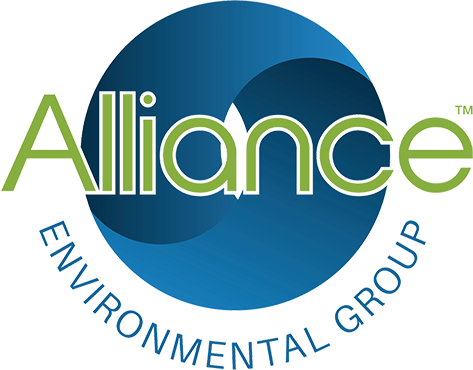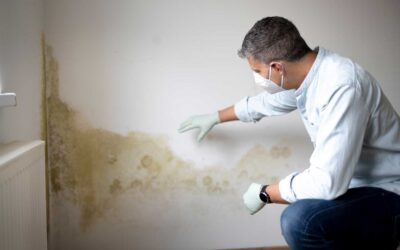Managing tenant relationships during lead abatement projects requires balancing regulatory compliance with maintaining positive resident experiences. Property managers overseeing multi-family housing face the unique challenge of protecting tenant safety while preserving occupancy rates and property operations.
When tenants receive notification about upcoming lead abatement work, their immediate concerns typically center on health risks, living disruptions, and potential displacement. Understanding these psychological responses enables property managers to develop communication protocols that address concerns proactively while maintaining project timelines and regulatory compliance.
This comprehensive approach to tenant communication during lead abatement encompasses strategic planning, daily operational protocols, regulatory compliance documentation, and crisis management procedures that protect both tenant relationships and property operations.
Strategic Communication Planning for Lead Abatement Projects
Successful tenant communication begins with thorough pre-project planning that integrates relationship management with regulatory requirements. Property managers must assess existing tenant relationships and develop customized communication strategies that address specific resident demographics and concerns within their properties.
California regulations mandate specific notification timelines, but effective property managers expand beyond minimum requirements to include relationship-building communications. This approach involves conducting preliminary tenant surveys to identify residents who may require additional support during remediation, such as elderly tenants, families with young children, or residents with existing health concerns.
The communication strategy should establish clear channels for two-way dialogue throughout the project. Regular office hours, dedicated phone lines, and structured feedback mechanisms ensure tenants can voice concerns while allowing property management to maintain project momentum. When searching for lead abatement near me, property managers should verify that contractors understand these communication requirements and can support collaborative tenant engagement approaches.
Documentation protocols must serve dual purposes of regulatory compliance and relationship preservation. Creating communication records that demonstrate both legal adherence and genuine concern for tenant welfare provides protection against potential liability while building trust. This includes maintaining detailed logs of all tenant interactions, concerns raised, and resolution actions taken.
Essential Tenant Communication Protocols During Active Remediation
Daily communication procedures during active lead abatement work require structured approaches that balance transparency with preventing unnecessary anxiety. Effective protocols include morning briefings about daily activities, progress updates at predetermined intervals, and evening summaries of completed work and next-day preparations.
Managing tenant concerns and objections requires prepared responses to common questions while maintaining project progress. Tenants frequently express worry about air quality, noise levels, property damage, and timeline uncertainties. Property managers should develop standardized response protocols that acknowledge concerns while providing factual information about safety measures and project management procedures.
Regular tenant check-in procedures help identify emerging issues before they escalate into complaints or regulatory concerns. These proactive touchpoints demonstrate attentiveness to resident needs while gathering feedback that can improve project execution. Successful property managers schedule brief daily conversations with affected residents, particularly those in units adjacent to active work areas.
Communication timing becomes critical when coordinating remediation activities with tenant schedules. Advance notification about particularly disruptive activities, such as HVAC system work or common area restrictions, allows residents to plan accordingly and reduces frustration. Property managers should provide specific timeframes rather than vague estimates, even when acknowledging potential delays.
Documentation and Compliance Communication Requirements
California regulations require specific notification timelines and content for lead abatement activities, including detailed information about safety measures, tenant rights during remediation, and contact information for regulatory agencies. Property managers must integrate these mandatory communications with relationship-building messages that demonstrate genuine concern for tenant welfare.
Required notification documentation must be maintained in formats that satisfy regulatory audits while supporting positive tenant relations. This includes preserving records of delivery methods, tenant acknowledgment receipts, and follow-up communications that address individual concerns or questions.
Creating communication records that satisfy both tenant relations and regulatory compliance involves systematic documentation of all project-related interactions. These records should demonstrate proactive communication efforts, responsive handling of tenant concerns, and consistent adherence to notification requirements throughout the remediation process.
Los Angeles municipal requirements add additional layers to state and federal notification obligations. Property managers must ensure their communication protocols address local tenant protection provisions while maintaining consistency with broader regulatory frameworks. This often requires customized notification templates that incorporate multiple regulatory requirements in tenant-friendly language.
Crisis Communication and Tenant Concern Escalation Management
Handling tenant complaints and concerns during disruptive remediation work requires prepared escalation procedures that resolve issues quickly while maintaining professional relationships. Common escalation triggers include unexpected project delays, safety concerns, property damage, or dissatisfaction with communication quality.
Emergency communication protocols for unexpected issues ensure rapid response to tenant safety concerns or significant project disruptions. These procedures should include immediate notification systems, temporary relocation assistance protocols, and coordination with remediation contractors to address urgent situations promptly.
Effective escalation management involves recognizing when tenant concerns require senior management attention versus issues that can be resolved through standard operational procedures. Property managers should establish clear guidelines for escalation triggers and ensure all team members understand appropriate response protocols.
Crisis communication strategies must balance transparency about genuine problems with reassurance about overall project management competency. When issues arise, prompt acknowledgment combined with specific action plans helps maintain tenant confidence while addressing legitimate concerns about safety or property management effectiveness.
Be Proactive When Seeking Lead Abatement Near Me
Successful tenant communication during lead abatement projects requires integrated approaches that combine regulatory compliance with sophisticated relationship management. Property managers who invest in comprehensive communication protocols protect both tenant satisfaction and property operations while demonstrating professional expertise in complex remediation scenarios.
The investment in advanced communication strategies pays dividends through maintained occupancy rates, positive regulatory compliance records, and enhanced property reputation. These outcomes directly support long-term property management success and competitive advantage in demanding multi-family housing markets.
Frequently Asked Questions
How do California regulations require property managers to communicate lead abatement activities to tenants?
California regulations require specific advance notice periods, detailed safety information, tenant rights documentation, and accessible contact information for both property management and regulatory agencies throughout the remediation process.
What are the most effective strategies for maintaining tenant satisfaction during disruptive lead abatement work?
Most effective strategies include proactive timeline communication, regular progress updates, responsive concern handling, clear safety measure explanations, and consistent availability for tenant questions and feedback.
Frequently Unasked Questions
How can property managers document tenant communications to protect against potential liability claims while maintaining positive relationships?
Effective documentation combines detailed interaction records with demonstrated genuine concern for tenant welfare, creating protection through evidence of proactive communication and responsive problem-solving rather than defensive record-keeping.
What communication strategies help prevent tenant anxiety about lead exposure without minimizing legitimate safety concerns?
Successful strategies focus on explaining specific safety measures being implemented, providing factual information about exposure risks and prevention methods, and maintaining open dialogue for addressing individual concerns without creating unnecessary alarm.




